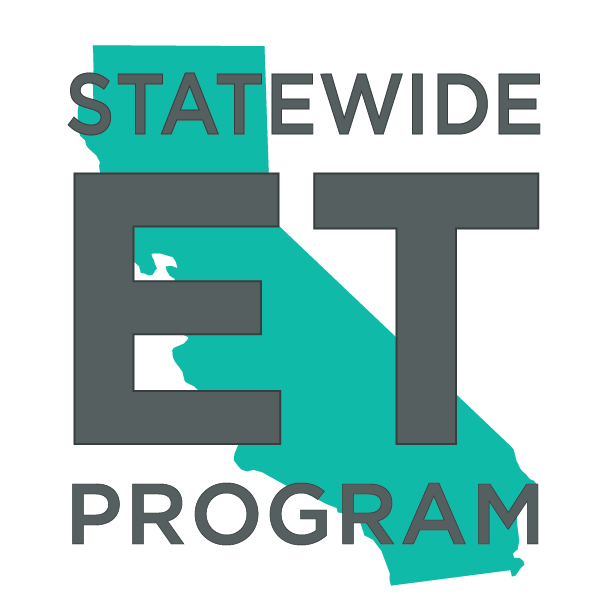ET23SWE0057 - Overcoming Key Barriers to Electrification of Foodservice Hot Water in California
This project focuses on the electrification of foodservice hot water. The project will conduct a literature review of commercial kitchen hot water research and data and collect primary data of foodservice facility hot water peak and hourly demand. The objective of this project is to provide data to dismantle a key barrier to electrification of water heating in commercial kitchens, which is outdated sizing guidelines for California foodservice water heating systems. In California, the California Conference of Directors of Environmental Health (CCDEH) outline foodservice water heater sizing guidelines and requirements for water heater installations and replacements. The statewide guidelines exclude heat pumps, storage capacity, and use outdated consumption assumptions, making HPWHs cost and/or space prohibitive to install even if allowed by local jurisdictions today. To meet California’s climate goals[2] and prepare for anticipated future commercial water heater zero NOx rulemaking[3], the CCDEH sizing guidelines must be urgently updated to right-size all foodservice equipment and accommodate HPWH technology.
As part of the literature review, the project will evaluate currently available HPWH products to determine if they meet unique demands of commercial kitchens, which are typically satisfied by gas tank-type water heaters, or whether one or more technical solutions (HPWHs with larger heat pumps and/or capturing waste heat from kitchens) can overcome the recovery rate barrier. Additionally, this project will identify opportunities to further reduce hot water demand and energy use in commercial kitchens, lending further support to revised water heating sizing guidelines. These opportunities include equipment efficiency (such as dish machines and pre-rinse systems) and revised pipe sizing methods such as Uniform Plumbing Code Appendix M. In addition to supporting revised water heater sizing guidelines, the hourly and maximum hot water demand data collected from CA foodservice facilities by this project and harvesting data from prior field projects can help validate the pipe sizing assumptions in UPC Appendix M, supporting broader acceptance in the regulatory and design community, and eventually building code updates, resulting in additional energy savings. This project will engage CCDEH members and local leading health departments to ask what data or information from field sites would be valuable to support this sizing guideline expansion to incorporate HPs and potential revisions.
This project will summarize the above data in a way that can be easily understood and assimilated by CCDEH, California Energy Commission (CEC), and other code-setting bodies (e.g., ASHRAE); the project team anticipates CCDEH will be interested in computed total hourly hot water demand (gallons per hour , GPH ) for each facility studied and monitored peak hourly demand in gallons for first hour recovery (FHR) and peak two-hour calculations, and that the CEC and other code-setting bodies will be interested in minute, hourly, peak, and annual consumption data. This project will engage with NSF and/or nationally recognized testing laboratories to publish thermal efficiency/COP value for commercial HP so they can be used for calculating energy input in the CCDEH guidelines. Additionally, the project will provide real-world hot water demand data to CBECC and other software development teams to improve energy models for water heating in foodservice facilities. The team will engage with HPWH manufacturers to determine whether they have incorporated recovery rating requirements in their product development pipeline, share and build support for the project goal to overcome this key barrier, and eventually to share field data they can use when developing technical solutions to these issues. The project team will engage directly with the above organizations to support current and future updates to codes and standards that can both remove code barriers to electrification of water heating in food service, and eventually support adoption of energy code requirements for high efficiency and low-carbon water heating equipment. By removing electrification barriers in foodservice hot water, this project aims to allow for heat pump and hybrid water heating to be more widely installed in foodservice facilities, including under existing utility or other incentive programs.
[1] TRC, 2023. ET22SWE0019 Market Potential for Heat Pump Assisted Hot Water Systems in Foodservice Facilities. Final Report prepared for Energy Solutions for the CalNEXT program. https://calnext.com/wp-content/uploads/2023/07/ET22SWE0019_Final_Report.pdf
CCDEH. 2020. Guidelines for Sizing Water Heaters. https://www.ochealthinfo.com/sites/hca/files/2021-06/Water_Heater_Guidelines_Updated_2-6-2020.pdf
[2] California Office of Governor, Gavin Newsom. 2022. California Releases World’s First Plan to Achieve Net Zero Carbon Pollution. https://www.gov.ca.gov/2022/11/16/california-releases-worlds-first-plan-to-achieve-net-zero-carbon-pollution/
[3] SCAQMD Proposed Amended Rule 1146.2 Working Group Meeting #2 Presentation Slide 9
This research project addresses a key barrier to decarbonizing foodservice water heating systems: the California Conference of Directors of Environmental Health (CCDEH) Water Heater Sizing Guidelines (Guidelines). The Guidelines are enforced by California county health and safety departments and do not currently include guidance for heat pump water heaters (HPWH), a high-efficiency technology critical to decarbonizing water heating systems. To address this barrier and increase the adoption of HPWHs in the foodservice sector, the project gathered present-day hot water usage data from full-service restaurants and developed an HPWH sizing approach to inform updates to the Guidelines. This report documents the literature, data, and policy review, learnings from engaging with environmental health stakeholders, and findings from field data collection at three full-service restaurants. It concludes by providing specific recommendations for revising the CCDEH Guidelines, building codes, and standards enhancements, and outlines future research needs.

